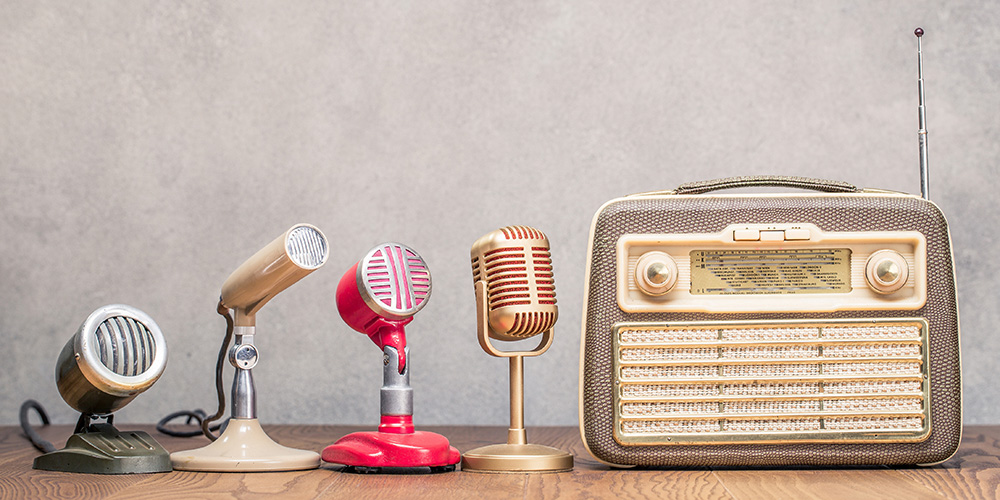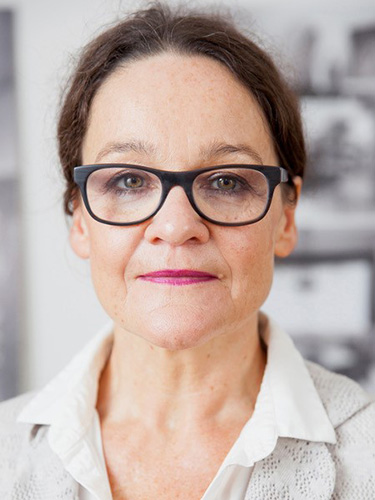Radiophonic cultures: how radio shapes sound and society
The cultural significance of radio is the subject of the research project “Radiophonic Cultures”, the second volume of which was recently published. In an interview, media scientist Professor Ute Holl explains the cultural and social forms that radio has produced, and why it remains an essential medium in the digital world.
22 August 2024 | Christian Heuss
Ms Holl, can you give us an insight into the Radiophonic Cultures project? What was it about?
The original project began as a collaboration between Media Studies and musicologists in Basel. The central question was how the experience of radio techniques changes composition. We wanted to know how radio had influenced the sound of music, changed listening spaces, reconfigured what we actually regard as audible, and what social and political consequences this had. The project was interdisciplinary and included experts from the fields of musicology, media studies and radio art.
What is so special about the use of radio compared to other media?
Bertolt Brecht conceived of radio not only as an apparatus of distribution, but of communication as well. We added that it was also an apparatus of production. Radio is a diverse ensemble in which numerous voices come together.
Composers such as Paul Hindemith, Walter Gronostay and Kurt Weill saw radio as a medium that offers experimental and creative possibilities that exceed the mere dissemination of music by far. They conceived of the radio itself as an instrument. For those of us in musicology and media studies, this also marked the beginning of a history of electronic sound generation.
What historical development has radio undergone, and what is its social significance today?
Radio began as unstructured broadcasting by amateurs, but it became an important military instrument during the First World War. With various insurgent movements using it for organization and mobilization after the war, most European countries introduced the legal framework of a public service medium. Britain granted radio licenses to the BBC in 1922, and in 1923 Switzerland passed the Telephone and Telegraph Act and Germany created the Reichspost. Composers and artists opposed the state administration of radio, with new forms of communication through sound. We document this in the two volumes that emerged from our research project.
You mentioned that radio also has a cultural and aesthetic dimension. Can you elaborate on that?
Yes, that’s the dual structure of radio: it’s a device and a mode of thinking, it connects channel and message, voice and noise, sound and voice. In our project, we investigated how electrical sounds, whistling, hissing and noise are used in radio composition. These sounds point to the technical infrastructure and show that radio doesn’t consist solely of well-tempered sounds, but also includes a multitude of noises and tones. One good example is the BBC’s Radiophonic workshops, where technicians, composers and journalists worked together to create innovative radio art. Some of the most important musical forms of the 20th century were probably developed in radio studios. Public radio stations have not only provided people with information, culture and entertainment, they were also responsible for the emergence of a unique musical culture in the 20th century.
What is the difference between radio and digital media on the internet?
Radio always generates an imaginary collective, simultaneity and an immediate intimacy, a physical participation, a large community. The latter however has also proven to be totalitarian in German history.
Digital media such as podcasts, on the other hand, are more individualized. So analogue radio creates an idealized inclusive public sphere, while the digitized forms create particularized, exclusive spaces.
What challenges do you see for radio today?
As a space of communication, I consider radio to be essential for a functioning society, precisely because it can share different voices, different forms of hearing and audibility, and different languages. At the same time, public service broadcasting is under financial pressure amid disputes about whether public money should be spent on media that not everyone chooses to use. A functioning democratic society needs diverse voices and perspectives. Radio makes them audible. But now we have competing media, and public space is no longer bound across generations and cultures. This raises the question once again: how do we make radio that different people want to listen to, including people under 25 years of age, for example? This is also the subject of our two publications on radiophonics: how can radio communicate across different borders?
Radiophonic history
The key form of communication in the 20th century, radio is currently undergoing processes of fundamental reorganization under the banner of “digitalization”. Viewing these processes under the older term of radiophonics reveals conceptual possibilities that extend far beyond the economization of production and broadcasting forms. Radiophonics, as a cultural technique, integrates the distinction between musical sound events and effects, as well as sounds, into a new concept of sound art.
These issues are addressed in two volumes: Volume 1, Radiophonic Cultures (texts), describes the current state of debate on radio, its history and possible future. Volume 2, Radiophonic Materials (documents), brings together key texts from the history of radio broadcasting.



